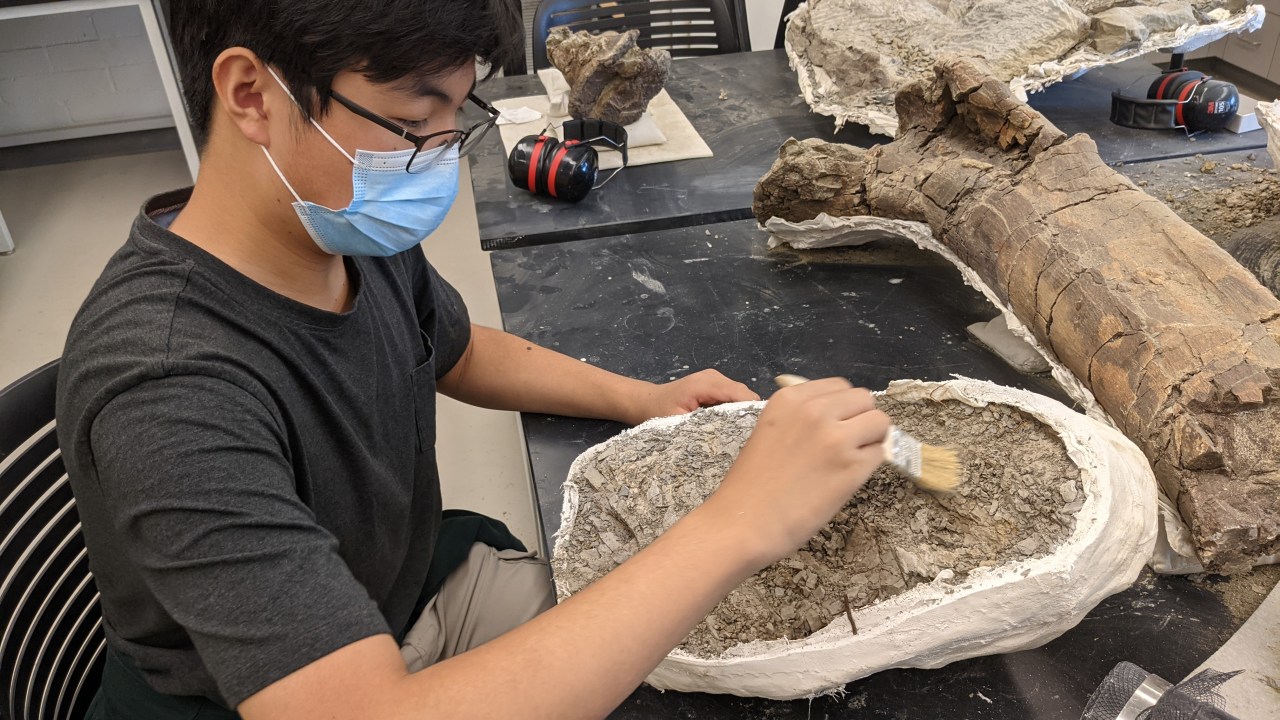
Followers of this blog will know I am a huge fan of museum schools. TrendsWatch: Museums as Community Infrastructure, the most recent CFM report, devotes one chapter to exploring how museums serve as essential pillars of education, in some cases by hosting, operating, or sharing their campus with a school. One such museum school is run by the Raymond M. Alf Museum of Paleontology, an AAM-accredited organization that itself is part of a small private high school in Claremont, California. Today on the blog, museum director Andrew Farke tells us about the origin of the Alf Museum and how it enriches the lives of students at the Webb Schools. (To learn more about this topic at #AAM2022, attend the session “So You Want to Start a Museum School?” on Friday, May 20, at 4 pm in room 204 B.)
–Elizabeth Merritt, VP Strategic Foresight and Founding Director, Center for the Future of Museums, American Alliance of Museums
As highlighted in the latest TrendsWatch report, museum schools come in many flavors. My particular institution—the Raymond M. Alf Museum of Paleontology at The Webb Schools—is an AAM-accredited museum embedded on the campus of an independent high school in Southern California. We have four thousand square feet of public exhibits and an active online education program. We are a significant scientific repository, housing nearly two hundred thousand fossil specimens ranging from tiny prehistoric rodent teeth to nearly complete dinosaur skeletons. Our fossils are described in numerous peer-reviewed scientific publications and studied by visiting researchers from all over the world. Ultimately, though, perhaps our most significant scientists are the high school students themselves.
The Alf Museum got its start in the 1930s, when science teacher Ray Alf began a fossil collection, supported by weekend and summer field trips with his high school students. Initially housed in a corner of Ray’s classroom, the collection grew and grew until it received its own building on campus in the 1960s. Yet the museum has always been more than a collection of teaching specimens or research objects or exhibits. It is about the experience of discovery—including a personal connection with that discovery and its implications. The 4.6-billion-year expanse of Earth’s history is immense, and it’s easy for anyone (particularly teenagers) to feel lost and insignificant against that. Despite this, Ray Alf chose to empower his students with a question I ask my own students today: “What will you do with your moment of time?” Yes, an individual human life is short in the grand scheme of things. But we can do so much in that geological instant! We are connected to all of the rest of life on our planet through a shared evolutionary heritage. As scientists, we can discover that history, and we can use that perspective to make a positive mark on our world.
Paleontology is a superb entry point for hands-on, authentic science learning, in that virtually anyone can make a major discovery that reveals a new aspect of Earth’s past. Our high school students all experience that firsthand, starting in the ninth grade, when they take an evolutionary biology course. Alongside discussions of genetics and ecology and bioethics, the course features a paleontology unit showcasing some of our best evidence for biological evolution. Students explore the museum exhibits for labs on Earth history and anatomical fingerprints of evolution, of course, but the most powerful experiences happen on our field trips. After seeing fossils in the classroom and in the museum, it can be life-changing for a student to make their own discovery in the rocks of the Mojave Desert. On numerous occasions, I’ve seen the flash of amazement across a student’s face when they realize that they are the first human ever to hold a fifteen-million-year-old horse tooth, or the ankle bone of an extinct camel. It is followed by a moment of empowerment—this isn’t a pre-determined lab experiment, but real scientific discovery in action. Students are further excited when they learn that their discovery will go into the permanent museum collection, to help shed light on our planet’s history.
This core ninth-grade experience is only one part of the museum program, and the program is more than “just” coursework. Our most successful strategy—and perhaps the most applicable lesson from our program for other institutions—has been to provide multiple avenues for student participation. High school students have full lives and many interests, and offering a broad array of opportunities ensures that they can engage in the program in a way that makes sense for them. Some students only do paleontology coursework (from an introductory paleontology class on into advanced independent research classes). Others find their passion in the after-school volunteering program, helping to prepare fossils in the permanent collection. Many students enjoy the summer field trips, to collect fossils for ongoing scientific research throughout the western United States while also having a meaningful small-group experience with their friends and teachers. Some students do it all! The primary point of success has been through having options; every student will connect differently with different aspects of the museum program.
As a professionally active paleontologist (and museum director), I enjoy the fact that I am part of a secondary school community. I get to teach classes in paleontology, lead field trips with students, and share the joy of discovery with them. Being a high school educator has become an important part of my professional identity, and a personal joy. Not only do I get to do exciting scientific research, but I do this research in collaboration with some really smart young people. Because our museum is embedded on the school campus, I get to know and work with these students across several years. This has some distinct advantages, beyond the more common formats of a short summer program or single semester class. We can scaffold knowledge across semesters and across years, and work at the pace of each student. We have time to learn the science, interpret the discoveries, and present the discoveries at professional conferences or in peer-reviewed publications, all at a high level. Also, we get time to work with the students on their science communication skills—there is a lot of growth between a week-long class project in ninth grade and a two-year research project presented at a scientific conference as a twelfth-grader. I am grateful for the extended time that I get with so many students.
My colleagues in paleontology often assume that the goal of our program is to create more paleontologists. How wonderful it must be to “catch them early”! Yes, I am proud of those students who might take their high school experience and turn it into a career in paleontology, or another science. But I am just as proud for those students who choose paths in business, or law, or public service, or any other number of careers. Thanks to their time in the Alf Museum program, those students are uniquely prepared to understand the process of science and critical thinking, and they are prepared to understand and advocate for the importance of museums in our world. Additionally, we can explore the many interconnected threads of scientific research, museum work, and society. Students are sometimes amazed to learn about the often nuanced ethical dimensions of working as a paleontologist, such as navigating issues of fossil ownership, geopolitical factors in research collaborations, mitigation of bias in the peer review process, and more. Science is never just science, and it is powerful for students make links across the curriculum.
Being a museum on a school campus presents wonderful opportunities to see how the process of science resonates within a student’s life. For example, two current students—both eleventh-graders—are identifying eighty-million-year-old turtle fossils discovered on recent fieldwork in Wyoming. Isolated pieces of turtle shell can be challenging to identify, and the students were initially feeling a bit unsure of themselves. When an expert on fossil turtles dropped by the museum, I set up a meeting for the students. It was amazing to see their conversation unfold. The students presented their preliminary findings to this visiting expert and were pleasantly surprised to learn that the expert agreed with their identifications! I wish I had a photo of that moment, to see the burst of confidence in these teenagers and to document that explosion of positive energy. Not only was new scientific knowledge created, but two young people learned their own personal capacity to be not just students but colleagues within a professional community.
As a museum director and educator, I know that museum schools transform lives. Through multiple avenues of engagement, every student can find their place within a museum. Through thoughtful coursework and long-term involvement, students become accomplished museum scientists in their own right, and make a mark in the scientific community. Through the magic of museum experiences—learning that anyone can discover something new and connect this knowledge to a broader world—high school students are prepared for all of the challenges that await after graduation.
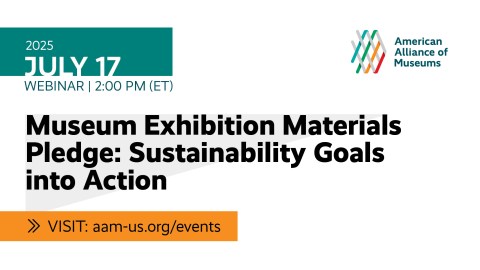

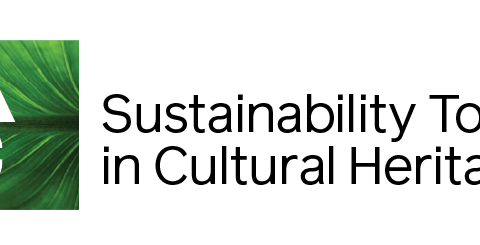

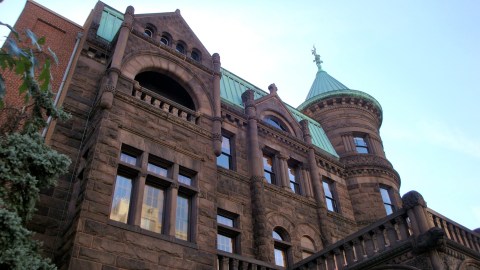


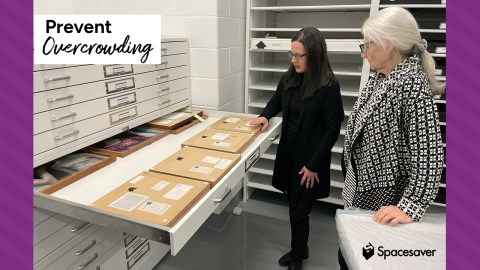
I think the role of arts organizations should be a vital aspect of a community. They should organize a 3rd space for people to learn about the arts, to make art, and to interact with their community members. Reading about the Alf Museum was so endearing, wholesome, and beautiful. It’s wonderful that the kids have accessibility to something like that within such proximity and that has a variety of different options to pursue. I’m grateful for the artistic spaces I’m around and I believe that we should further propagate 3rd spaces, organizations, and art culture for more people. It is healing reprieve from the typical productivity that we have to engage in within society.